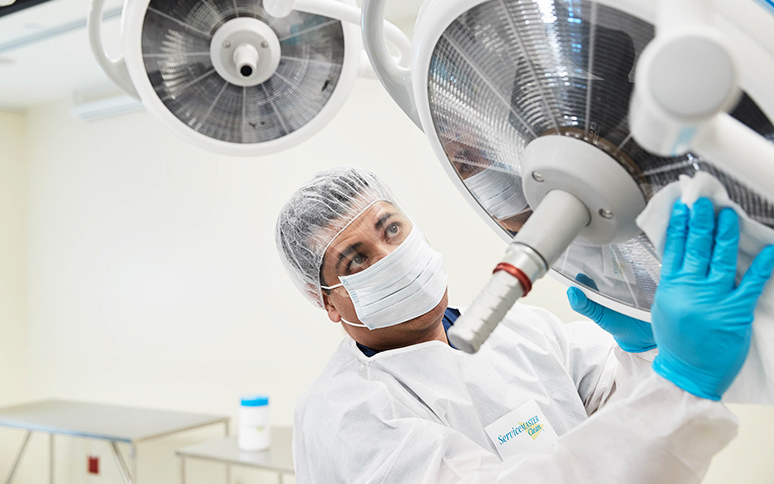Best Practices for Using High-Level Disinfectants in Healthcare Settings
High-level disinfectants (HLDs) are a common feature of many healthcare facilities. According to the Occupational Safety and Health Administration (OSHA), these chemicals are used as sterilants to kill all forms of microbial life, except for bacterial spores, from healthcare instruments. If used incorrectly, healthcare professionals who use these powerful chemicals may be exposed to many health risks. That's why healthcare settings must follow best practices for handling glutaraldehyde and other HLDs. To protect your staff and patients, use this helpful information, including high-level disinfectant best practices, from the professionals at ServiceMaster Clean.
When Are High-Level Disinfectants Used?
According to the Centers for Disease Control and Prevention (CDC), high-level disinfectants must be used to eliminate microorganisms on semicritical items that come into contact with a mucous membrane or non-intact skin. This may include both rubber and polyethylene tubing and catheters, lensed instruments, hinged instruments and potentially even smooth, hard surfaces. Before using an HLD, the CDC recommends checking material compatibility first, as some HLDs like hydrogen peroxide may corrode instruments.
High-Level Disinfectant Best Practices
The following general recommendations for using HLDs like glutaraldehyde in healthcare settings have been created by OSHA. Teach your healthcare staff these best practices to help them stay safe from HLD exposure risks.
Use Proper Ventilation
According to the CDC, difficulty breathing and asthma-like symptoms are one of the most common effects of HLD exposure. To prevent exposure to HLD vapors, OSHA states that any room where glutaraldehyde is being used must be well-ventilated. At a bare minimum, such a room needs to have a minimum air exchange rate of 10 air exchanges per hour, although some agencies recommend 15 air exchanges per hour. Local exhaust ventilation with a local exhaust hood should also be installed where glutaraldehyde vapors are most likely to be released.
Transport and Store HLDs Safely
HLDs are toxic, so transporting and storing them must be done with care. Whenever glutaraldehyde is being transported, it needs to be stored in a closed container that is equipped with tight-fitting lids. Unused glutaraldehyde should likewise be kept in closed containers in a cool area that is both secure and properly labeled. If any outdated solutions are present, they should be properly disposed of right away. To minimize the risk of accidents, a designated and well-ventilated storage area should be used.
Handle HLDs Safely
OSHA lists several tips for using and handling HLDs properly. Some of the main tips to effectively use and handle HLDs includes the following:
Only handle HLDs with the appropriate personal protective equipment (PPE).
When transferring an HLD into soaking basins and reservoirs, pour the liquid slowly and carefully to minimize splashing.
Keep covers on soaking basins closed as often as possible, and only use tight-fitting lids on soaking containers.
Rinse HLD-soaked instruments under gently running water as close as possible to the soaking tray or washer to contain the solution.
Only use HLDs like glutaraldehyde in designated areas where traffic and ventilation are controlled.
If a small spill or release occurs, staff members are encouraged to clean them up immediately.
If large spills or delayed response occurs, employees must close doors, alert others and contact the HazMat spill response team.
In healthcare settings, cleanliness, organization and protocols matter. To help keep your entire facility fully cleaned, sanitized and disinfected, call on the experts at ServiceMaster Clean. Our team uses best practices and procedures created by governmental healthcare organizations to help with infection control and prevention, risk reduction, environment improvement and more. Find out how our commercial healthcare janitorial services can help keep your healthcare facility in great shape.








